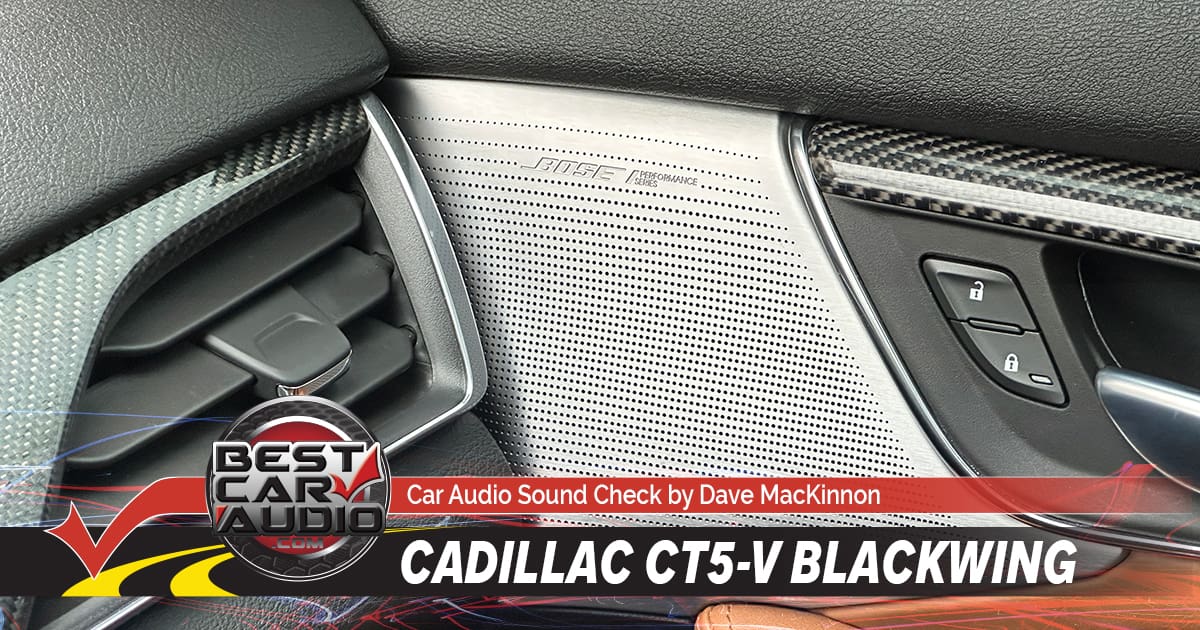In our never-ending efforts to create great content, we devised a plan a while back to share listening tips for specific tracks with our readers. Our plan at the time was to explain what to listen for in different songs to evaluate the performance and capabilities of an audio system. After some research and experiments, we’ve come up with a twist on this plan that we think you’ll enjoy. We proudly introduce Sound Check – a series of articles that evaluate audio systems with very specific details about the tracks we’re using. These will be similar to what happens at a car audio sound quality competition but with more specifics about what we hear rather than numbers on paper. Of equal importance, the articles will look at the audio system’s design in terms of its ease of use, which is something many people overlook when purchasing a new car or a new radio.
A Tale of Two Cadillacs
We put the word out on social media that we wanted to audition some of the better factory-installed stereo systems in premium vehicles. We heard back from a local gentleman named Steve. He owns a pair of Cadillac CT5-V sedans and invited us to come over for a listen. The first vehicle we auditioned was a 2023 CT5-V Blackwing model, with the 15-speaker Bose system and, sadly, not Harman’s optional 16-speaker AKG-branded system. Nevertheless, Steve had upgraded the 2023 Blackwing with an aftermarket subwoofer system to enhance the lowest octave. We left that turned off for our evaluation. The other CT5-V is a 2020 model with the top-of-the-line (for the time) Bose Performance Series system. Aside from different grilles on the upper door speaker locations, the two systems look nearly identical.
Sound System Interface
The user experience with an infotainment system extends far beyond what the system sounds like. How it works and how easy it is to use are equally important. As such, let’s talk about the interfaces before we listen to the systems. Both vehicles feature the Cadillac User Experience infotainment system. The CUE includes a centrally mounted 10-inch touchscreen display and a dash cluster with a display. The dash will show volume and track adjustments along with the usual speedometer, tachometer and additional information crucial to driving. Both cars have steering wheel-mounted controls for volume and tracking. The 2023 has the master volume and track control in the center console just behind the shifter; the 2020 has those controls at the base of the main screen in the dash. Both cars have USB ports in the storage compartment in the center console.
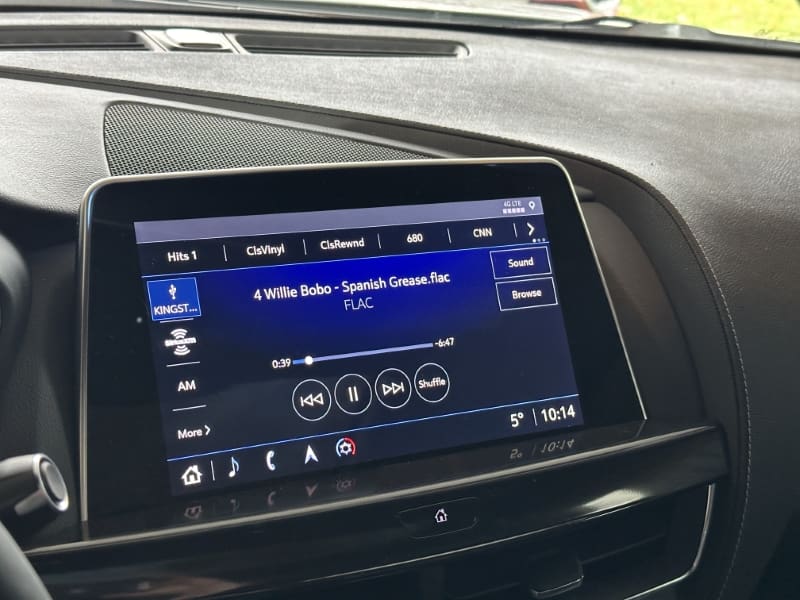
Regarding responses to touchscreen commands, both systems are more than acceptable. There’s no long delay between your request and the screen response. We felt like commands from the track buttons on the steering wheel took a bit longer than we’d deem perfect, though.
Something a lot of people overlook is boot time. Boot time, or startup time, is the time it takes for the radio to wake up and become fully functional. The companies that provide the audio components to vehicles have a couple of tricks up their sleeves to accelerate this process. Sadly, those aren’t present in these Cadillacs. Music started playing after four or five seconds, but it was over 10 seconds until the radio was fully functional. It’s not the worst we’ve seen, but it’s close.
We should note that both vehicles found and played all the MP3, WAV and FLAC tracks on our memory stick. We have each song in all three formats. One quirk we observed on the 2020 was that it showed all the tracks from all the folders unless we navigated to a specific folder. As such, there were three of each song.
Another item we could do without was Cadillac’s decision to label the USB memory stick on the screen with the Volume Label assigned to the device. We were looking for USB as the source but had to tap on the Kingston icon instead. Their choice makes sense, but it’s not intuitive.
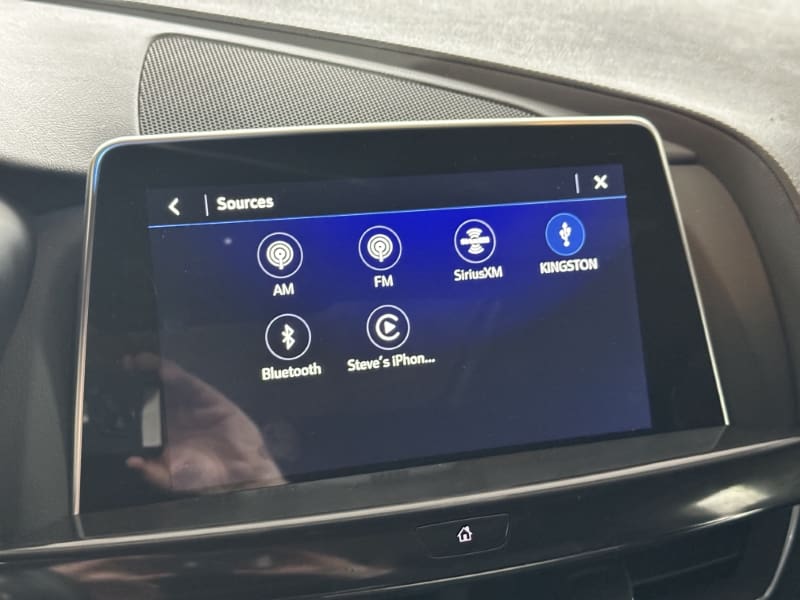
2023 Cadillac CT5-V Blackwing Sound System Evaluation
Let’s kick off the listening session with the 2023 Blackwing. As mentioned, this vehicle doesn’t have the upgraded AKG sound system. In fact, the car didn’t have many of the options Steve wanted. The back story is that Steve had ordered a well-appointed version of the CT5-V Blackwing, but this one came up for sale after the original purchaser backed out of his purchasing deal. Getting a Blackwing isn’t easy, so Steve grabbed this one when he could. He said he’d pick up the one he ordered if and when it arrives. Oh, how new car buying has changed over the last few years.
We started the audition by verifying that the left and right channels were correct. There were no issues with this, so we turned next to the “7-snare” track from the IASCA competition disc. This is a recording of seven snare drum hits panned across the soundstage. In a perfect system, the space between the snares would be equal, and the fourth hit would be centered in the middle of the physical listening space, which usually correlates to the center of the windshield. In this system, hits 3 and 4 were almost on top of each other and located just to the right of and directly in front of the driver’s seating position. Hit 5 was in the middle of the vehicle. The far left was in line with the left A-pillar, and the far right was at the right edge of the windshield. These results would be considered a mediocre performance in terms of imaging accuracy.
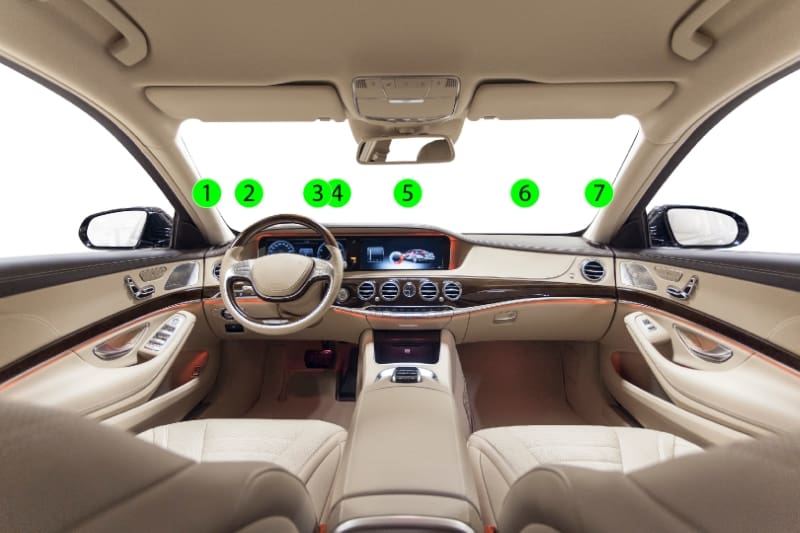
I listened to Willie Bobo’s “Spanish Grease” next. This track is a phenomenal test of left-to-right tonal balance and proper front stage time alignment. At 38 seconds into the track, the word “get” is repeated. On a phenomenal system, the word starts on the right, then moves forward into the listening environment, across to the left, and back toward the stage. In the case of the Caddy, the sound came out about 6 to 8 inches into the vehicle. Not bad, but not wow. A great performance would be for the sound to align with the seating position. We’ve heard it extend behind the listening position once, but never in a vehicle, at least so far.

“Chocolate Chip Trip” from Tool’s album Fear Inoculum was next. The percussion on this track is incredible, and the recording is very clean. The Bose system did an admirable job in terms of dynamics. It was better than mid-pack regarding tightness and control and was well-balanced. The lower frequencies dropped from the soundstage across the dash into the footwells. We call this frequency steering. The lowest frequencies were a bit thin. We turned up the aftermarket sub, and that filled things in nicely. We turned it back down to evaluate what General Motors delivers to its clients.

Many people will cringe, but the next track was “Spanish Harlem” performed by Rebecca Pidgeon. Like it or not, this track makes picking out tonal balance in the midrange easy. Indeed, the Bose system was a bit forward in this regard. The end of the letter E in the word red stood out. Likewise, there was a bit of sibilance on the letter S. The upright was slightly over-emphasized, in terms of frequency, but it wasn’t ruined.

Following the same theme, we listened to “Yellow Flicker Beat” by Lorde and “I Can See Clearly Now” by Holly Cole. In both cases, that midrange emphasis took away some of the warmth and emotion of the women’s voices. It made them clear, which might help punch through the exhaust note of the 6.2-liter supercharged V-8. The upright bass on “I Can See Clearly Now” had some unwanted ring to it, though the lower notes were good.

We wanted to see how the system handled very low frequencies, so I played “Prodigal Blues” by Billy Idol and “Boom Boom Pow” by the Black Eyed Peas. The system was just able to catch the rumble from Idol’s track, but it felt thin and lifeless. It couldn’t reproduce the deep bassline from “Boom Boom Pow.” The aftermarket sub fixed that, and it was a worthwhile upgrade. This emphasizes what we’ve said many times: The first and likely best upgrade you can make to even premium factory sound systems is to add a good subwoofer.
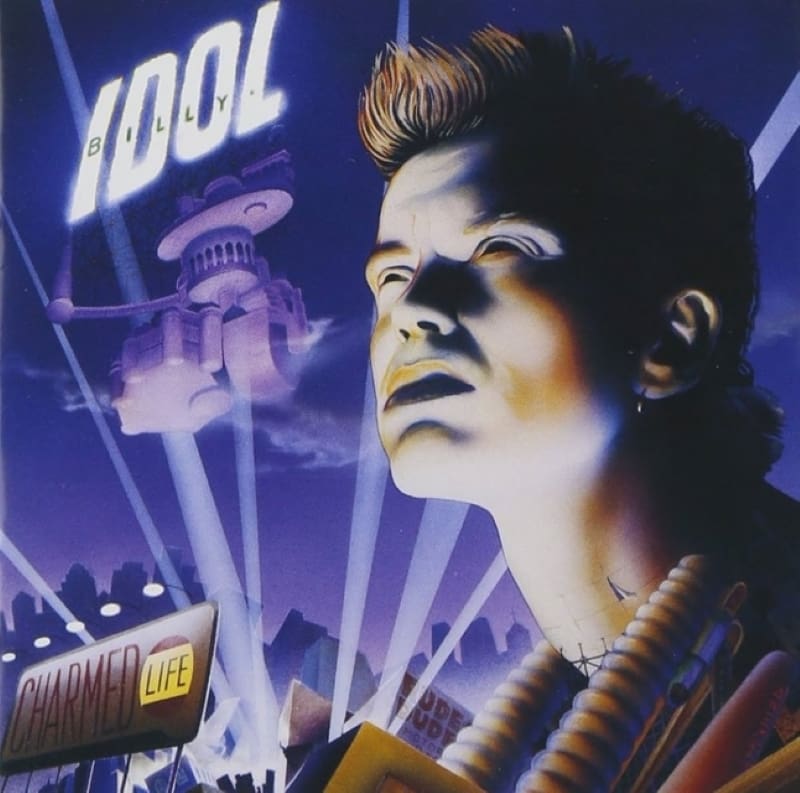
Lastly, we played “Blue Monday” by New Order and “Two Tribes” by Frankie Goes to Hollywood to evaluate bass and midbass dynamics. We noticed the bass pulled toward the vehicle’s rear through each kick on the first track. Either there is something off with the factory subwoofer time delay settings, or something in the surround processing is playing games. The bass kick was good, not startlingly tight, but good. On “Two Tribes,” we noted again that the factory sub couldn’t quite dig deep enough, and the emphasis in the midrange started to mask the midbass frequencies. The “hit” had too much midrange – more rim shot than drum skin, if that makes sense. It wasn’t a muddy, sloppy disaster, and we appreciate that.
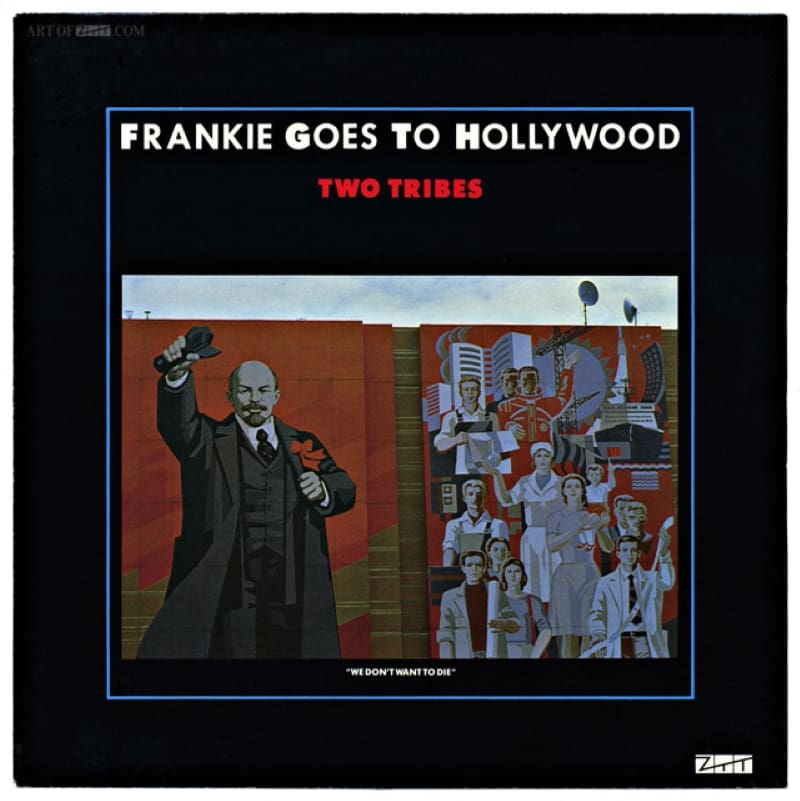
Overall, we’d give the 2023 Cadillac CT5-V Blackwing Bose system a grade of 7/10 for the interface, 6/10 for tonality and 5/10 for staging and imaging. We plan on including aftermarket systems in these Sound Check evaluations, so the low scores aren’t a failure. This audio system doesn’t represent the best you can experience in the vehicle.
2020 Cadillac CT5-V Stereo System
With the Summit White car done, we moved to the black 2020 model parked outside. Steve had graciously warmed the vehicle, so we were ready to rock. The left and right checks passed, so it was time for the 7-snare track. In the 2020, hits 1 and 2 were stacked on top of each other on the far left, 3 and 4 were close together in front of the driver position. Hit 5 was slightly left of center, 6 was right-center and 7 was far right. The new car was much better in terms of imaging accuracy.
The depth of the word get on “Spanish Grease” extended from the windshield to the steering wheel. Initially, the middle bass frequencies in this car seem muddier than in the newer model.
Listening to “Chocolate Chip Trip” emphasized that the soundstage was at the same level as the tweeters in the A-pillars. The newer system didn’t emphasize this. The rim shots were muddy, and the kick drum hit with a boom rather than sounding real. It was fun but far from accurate. There is a lot of panning in this track, and the confused focus of the soundstage detracted from the experience.
On “Spanish Harlem,” we heard clear evidence of resonance on the lower upright bass notes, making it sound very one-noted. Unfortunately, the left midrange speaker produced a nasty buzz six seconds into the track while Rebecca sang “red rose.” We aren’t sure if something is damaged or has come loose. Her voice was also a bit sibilant. The same observations extended to “I Can See Clearly Now,” though the upright bass sounded thin on the bottom and, overall, not very natural.

We listened to “Fast Car” by Tracy Chapman in the older car and noticed bass frequencies pulled toward the vehicle’s rear, just as with “Two Tribes” in the newer car. The bass was actually a bit better on this system on “Blue Monday” in terms of staying up front. The opening air raid siren on “Two Tribes” didn’t sound as real, and there was an overt emphasis on the lower frequencies of the voice at the beginning of the track. It just didn’t sound like a real human voice.
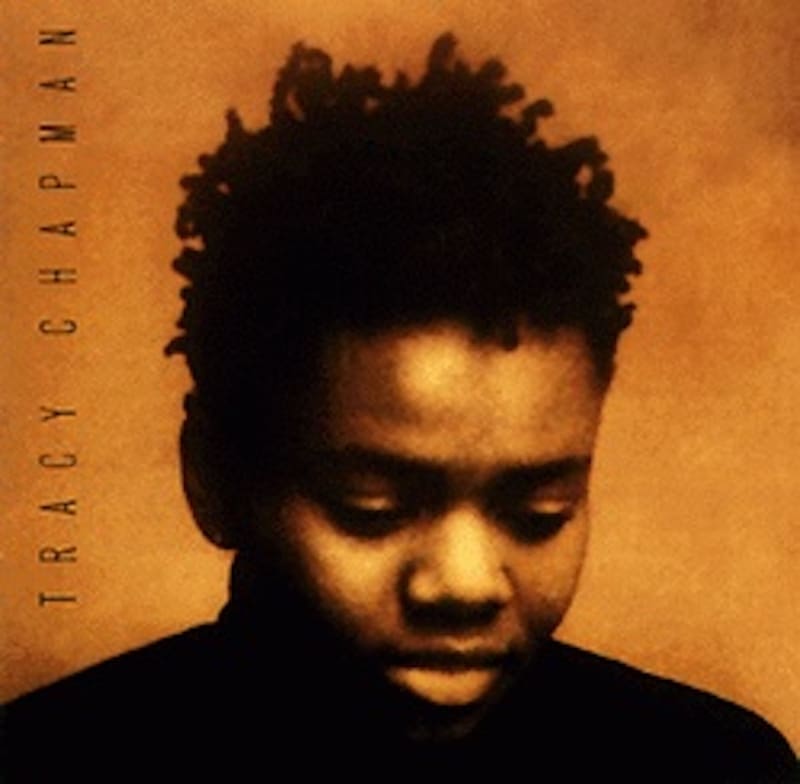
This premium Bose system had no problem reproducing the lower bass frequencies in “Prodigal Blues,” so you can forget that silly “no lows” nonsense that people correlate with Bose systems.
We’d give the 2020 Cadillac CT5-V Bose Performance Series audio system a 6/10 for the interface, a 5/10 for tonality and a 4/10 for spatial accuracy.
Our First Sound Check System Review
And there you have it: a detailed review of two Bose audio systems in modern, high-end vehicles. Don’t freak out about what looks like very low scores. These systems are leaps and bounds better than many audio systems we’ve heard. However, we aren’t afraid to give out a 0 or 1 as a score when things go completely wrong!
Another thing we’ll mention is that we didn’t evaluate the system from the passenger seat. Both of these vehicles have a center-channel speaker. Evaluating systems, especially factory-installed solutions, from both seats is something we plan to include in the future.
We must admit that it was a unique privilege to audition them back-to-back, and we can’t thank Steve enough for allowing us to use his vehicles for this article. We have a few more cars lined up and plan to include Sound Checks on some of the best aftermarket sound systems ever built. Stay tuned for more!
